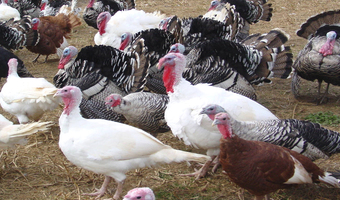
The African armyworm, scientifically known as Spodoptera exempta, is a particularly devastating pest. An early warning system using traps that fake the smell of mating female moths has delivered a breakthrough in countering the spread of the armyworm, which can move into an area and devastate entire crops.
The over 2 million farmers in Kenya and Tanzania who together grow over 7 million hectares of cereal, mainly maize, now say cases of armyworm invasion have dwindled greatly thanks to the early detection under a project developed by the Centre for Agriculture and Biosciences International (CABI).
The African armyworm, scientifically known as Spodoptera exempta, is a particularly devastating pest. Large numbers of the voracious black caterpillars appear suddenly, leaving crops and pasture devastated in their wake. Once the food has been exhausted in one area, they migrate to their next destination. With outbreaks are difficult to predict, they catch farmers unaware and unprepared. If uncontrolled, they can cause total crop loss, with millions of hectares affected in bad years.
Related News: Biological pest controls organically cut 50% in vegetable losses
But understanding the insect has assisted scientists in predicting which areas might experience outbreaks, some two weeks ahead of actual invasions. However, while such forecasts are useful for national planning, they are of little or no value to individual farmers. Governments often have insufficient capacity for timely control, with insecticides continuously being ruled out due to their prohibitive cost and damage to the environment.
The project has therefore put in place local reaction and monitoring systems.
Early detection is being achieved using factory enhanced female hormones, commonly known as pheromones, which act as a trap that dupes the male of the presence of a female ready to mate. A pheromone is a biological chemical secreted by female insects or even mammals that triggers the attraction of a male to a female.
In the armyworm it is the basic indicator used by male moths to identify female moths for mating with documented evidence showing that male armyworm moths are able to detect the scent of the pheromone from a radius of 10 km, depending on wind direction.
The pheromone trap also contains an insecticide and once inside the trap the moths die. The farmers then count the dead ones after every week.
According to scientists, more than 30 catches of the moths in a week is a clear warning of a possible invasion of armyworms. When this happens, an alert is issued by word of mouth in schools, chiefs’ meetings, churches and on community radio.
The project, which was piloted in Tanzania several years ago and eventually scaled up in other countries, has also involved the training of farmers who in turn train others within the village.
Initially, the plan was to train at least 200 villages, but the project has exceeded expectation with Malawi and Tanzania alone exceeding the target. According to Jon Knight, an economist from the Imperial College of London who has been among the people involved in the venture, the forecasting has been highly effective given the low costs involved.
The initial cost of training each village was just $233 dollars with an additional $4 being used to buy the trap which lasts for up to ten years and the pheromone costing $2 a year. However, the cost has been further reduced through more cost effective training, and has delivered added benefits in teaching researchers how best to engage with local farmers.
The second phase of the project involves the establishment and expansion of a virus production system in Tanzania to create a natural pesticide called SpexNPV to fight the worm. Scientists have tested the virus, as well as locally-grown neem, and shown that both kill the worm.
Over half of farmers in Tanzania have neem trees, and can use both leaves and berries to fight the worm. But it takes a lot of leaves to generate a pesticide setting up problems of bulk. However, the virus is much less bulky, and is being made so that it is held in a light clay solution that is then dried ready for rehydrating and spraying.
Related News: Garlic growing serves as natural repellent to over 10 pests
Related News: Trap cropping: an innovative biological pest control method
The technology to produce the virus locally has been brought in from Brazil and will initially create enough virus to treat around 10,000 ha a year, and later to meet the regional need of 100,000 ha a year. The project is being funded through the Research into Use Programme (RUI) funded by the UK Department for International Development (DFID)
The double breakthrough of an early warning system and natural pesticides come at a time when the government is spending over Sh70m a year on pesticide to head off the migratory pest. Moreover, with much of Sub Saharan Africa including Kenya having experienced better rainfall this year, scientists are warning this can provide conducive breeding conditions for the pests. Already, over 120,000 farm families in Malawi reported the destruction of 35,000 hectares of crop in January last year.
The worst attack was in Liberia in 2009, where armyworms attacked about 100 villages and damaged crops, including coffee plantations and pasture. Over 500,000 people were affected, and over 20,000 residents were forced to flee their homes.






 Patrick Mwangi an enterprising farmer from Muranga County is rewriting the rules of agribusiness in poultry farming having shrugged off temptations of joining the quail craze but focusing on the more neglected turkey.
Patrick Mwangi an enterprising farmer from Muranga County is rewriting the rules of agribusiness in poultry farming having shrugged off temptations of joining the quail craze but focusing on the more neglected turkey.










